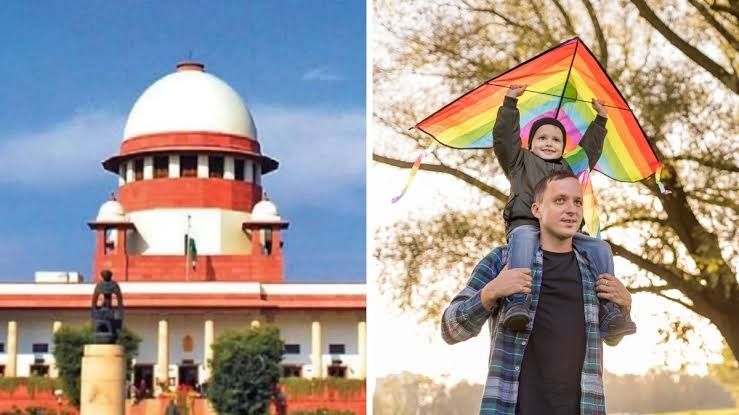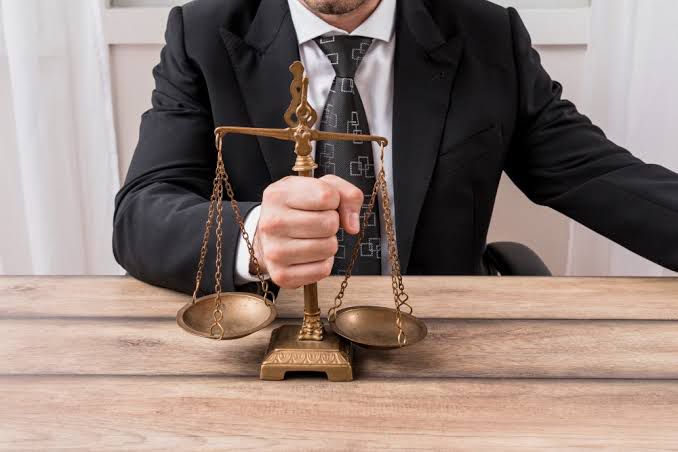CHILD ADOPTION BY SAME-SEX COUPLES

Author : Yashveer Singh Virk, a student at HLM Law College (CCS University)
TABLE OF CONTENTS
- INTRODUCTION …………………………………………………………………………… 3
- SOCIETAL TABOOS SURROUNDING SAME-SEX COUPLES ………………..…….. 3
- LEGAL OBSTACLES FACING SAME-SEX COUPLES ………………………………. 4
- COMPARING WITH INTERNATIONAL LEGAL SYSTEMS ………………………… 6
- CONCLUSION ……………………………………………………………………………… 7
- REFERENCES ……………………………………………………………………………… 8
INTRODUCTION
The struggle against Section 377 IPC was partially over when in September, 2018, a five-judge bench of the Supreme Court unanimously decriminalized consensual sex between two adults irrespective of their gender and partially struck down Section 377 of the IPC. The adoption laws still discriminate against the same-sex couples as they cannot adopt a child according to the same. In the landmark Judgment of Navtej SIngh Vs Union Of India, this judgment did not address the civil rights of same-sex couples seeking to form family units through adoption. Chief Justice Dipak Mishra highlighted in the Navtej Singh judgment that same-sex relationships encompass more than mere sexuality, emphasizing emotional bonds and equal citizenship rights. Despite some legal regulations on adoption, exceptions persists for same-sex couples and unmarried couples. Homosexual relationships have historical roots in Indian society, evident in ancient temple art and texts like Kamasutra.
This paper will firstly examine the stigma and discrimination faced by same-sex couples in mainstream society, particularly regarding family laws such as adoption and marriage. Even when permitted by law, social stigma remains a significant barrier. Secondly, it will address legal obstacles, including laws tailored exclusively for opposite-sex couples, which infringe upon the rights of same-sex couples and contravene the Indian Constitution. Thirdly, it will conduct a comparative analysis with foreign jurisdictions such as the United States, the United Kingdom, and South Africa, exploring their approaches to laws concerning same-sex couples. FInally, the paper will conclude by advocating for the removal of discriminatory barriers and the right of same-sex couples to adopt children.
SOCIETAL TABOOS SURROUNDING SAME-SEX COUPLES
India, a diverse society with varying beliefs among its communities, remains united by a common thread of unity. However, the influence of certain negative elements in society, often driven by religious or political agendas, fosters taboos and animosity. Same-sex attraction, a natural phenomenon found worldwide, is no exception in India. Evidence from ancient Indian scriptures and historical records like the Kamasutra and instances during the Mughal era suggests a longstanding presence of homosexuality in Indian culture. Despite efforts to reduce stigma, societal acceptance remains elusive. Same-sex couples face discrimination and are deprived of political, economic, and social rights, leading many to isolate themselves for protection. Discussions about them are often met with hostility or labeled as anti-national. Instances such as the backlash against the film “Fire,” depicting a lesbian couple, highlight the challenges of challenging societal norms, particularly against religious fundamentalist.
They endure numerous derogatory comments regarding their sexual orientation and encounter hostile discrimination on social media, as recounted by Bollywood personality Karan Johar in his autobiography “The Unsuitable Boy.” Johar shares instances of societal backlash against his sexual identity, leading to self-doubt. He faces daily social media messages, including false rumors about a relationship with Shah Rukh Khan, and experiences Twitter abuse such as “You homosexual, leave our nation” or “You’re contaminating our society, leave.” Despite this, Johar has developed resilience and humor to cope with such negativity. Adopting two children has drawn public criticism, with misconceptions that children raised by same-sex couples fare worse than those by heterosexual couples, which Johar refutes, asserting that children benefit from having two parents, regardless of gender. Johar’s public struggles highlight the plight of countless vulnerable individuals who remain unseen. Even after the repeal of section 377, societal stigma prevents some couples, like a Kerala pair, from openly acknowledging their 14-year relationship for fear of familial rejection.
LEGAL OBSTACLES FACING SAME-SEX COUPLES
The Navtej Johar rulings saw the Supreme Court legalizing this discriminatory segment, yet the full realization of rights remains elusive. The key concern is whether we are merely paying lip service to these rights or genuinely delivering substantive change. While the judiciary has acknowledged the rights of same-sex couples on paper, societal stigma prevents their practical exercise. Some rights, notably concerning family and adoption, still lack recognition. Even when recognized, societal barriers hinder their utilization. In our democratic system, it’s not solely the judiciary’s duty; the legislature must also dismantle outdated societal taboos and grant equal rights to same-sex couples. The judiciary should maintain impartiality, but in cases like Suresh Koushal, where vague and illogical justifications upheld Section 377, its role seems compromised. Despite recent dismissals of petitions regarding civil rights like adoption and marriage for homosexuals, the rights of same-sex couples were affirmed. In a democracy, each branch has its powers, and should one falter in democratic duty, others must serve as checks and balances.
The judiciary’s move to decriminalize the contentious section upholds the rights of same-sex couples. Now, the legislature must amend oppressive laws related to family rights, such as the Hindu Adoption and Maintenance Act, 1956, and the Juvenile Justice (Care and Protection) Act, 2015. These laws restrict adoption to married couples, contradicting guidelines from the Ministry of Women and Child Development under the Juvenile Justice Regulation for Adoption, which allow single individuals to adopt. However, joint adoption is limited to married couples, excluding unmarried or same-sex couples. These laws discriminate against same-sex couples, despite the decriminalization of homosexuality, highlighting a contradiction in policy. The adoption laws specify criteria for adoption, favoring married couples or single individuals, while excluding unmarried or same-sex couples. Legal frameworks evolve in response to changing needs and circumstances, indicating the potential for future amendments.
These actions violate Articles 14, 15, and 21 of the Indian Constitution, rendering them unconstitutional. Article 14 mandates equality before the law and equal protection under the law, yet the differentiation between married and unmarried couples in the act contradicts this principle. Marriage encompasses more than procreation, serving as a union of love and companionship. Consequently, the actions fail the Article 14 classification test due to unjust, unfair, and unreasonable discrimination without a discernible difference or rational nexus. Article 15 prohibits discrimination based on sex, including sexual orientation, yet same-sex couples face minority discrimination. In 1948, a provincial committee proposed legislation to codify laws based on traditional customs and religious values. The Juvenile Justice (JJ) Act aims to provide family to abandoned children in foster care, catering to couples unable to conceive while ensuring the welfare of children. This arrangement benefits both spouses and children, aligning with the act’s objectives.
COMPARING WITH INTERNATIONAL LEGAL SYSTEMS
In several foreign jurisdictions, the rights of same-sex couples are restricted, yet many countries, including the United States, South Africa, and the United Kingdom, have legalized joint adoption by same-sex couples. Despite this, India lags behind, failing to amend laws or recognize the rights of same-sex couples as equal citizens. Acts like HAMA and JJ do not specifically bar adoption by same-sex couples; instead, they allow single individuals, regardless of sexual orientation, to adopt. England’s Adoption and Children Act 2000 permits unmarried same-sex couples to adopt, highlighting the need for similar reforms in India. Political parties should prioritize such issues over religious and caste politics, considering the perspectives of minorities. Adoption is about children’s rights, and prioritizing their welfare should outweigh discriminatory concerns. If the government fails to act due to majority views or political considerations, the judiciary should intervene, as seen in the United States, to protect the rights of same-sex couples based on constitutional principles.
Consequently, the government must enact laws amending legislation for same-sex couples, disregarding societal conservatism and aligning with constitutional principles. In India, rapid modernization has coincided with the emergence of conservative and revivalist ideologies, posing a significant challenge to progressive legislation. Despite opposition rooted in tradition, culture, and religion, such views should not dictate legislative decisions. In courts, unequal treatment of petitions is evident, with the Supreme Court often prioritizing majority preferences over minority rights. However, autocratic practices are incompatible with India’s democratic ethos governed by the constitution. Given the significance of family in society, legislative reform is deemed essential to ensure equal acceptance of same-sex adoption.
CONCLUSION
Same-sex couples, as Indian citizens, possess equal rights across socioeconomic, political, and cultural domains. In India, a secular, socialist, democratic, and republican society, all individuals are treated equally regardless of sexual orientation or gender. The Supreme Court’s ruling in Navtej Singh v. Union of India highlights that Section 377 violates Article 14 of the Indian Constitution due to its arbitrariness, vagueness, and unlawful intent, thus necessitating its decriminalization. This extends to adoption laws that discriminate against same-sex couples, with Article 21 and the Yogyakarta principles advocating for the right to self-identity. Justice Nariman’s judgment underscores the parliamentary legislative understanding evident in the Mental Healthcare Act, 2017, which dispels societal misconceptions about same-sex couples, particularly regarding child adoption. The constitution safeguards every Indian citizen’s freedom to live with dignity and privacy, including the right to intimate choices and lifestyle, as affirmed in the K.S. Puttaswamy case. Laws should not be based on moral ideologies that contradict constitutional principles, and the rights of same-sex couples should not be constrained by societal structures such as caste, gender, class, religion, or community conflicts, which affect all couples, not just same-sex ones.
Adoption laws discriminate by only permitting married couples and single individuals, failing Article 14’s classification test. If married couples can adopt, why not unmarried or same-sex couples? Marriage is a societal norm, but Article 21 upholds individuals’ right to live as they choose, irrespective of societal norms. Our constitution advocates for an inclusive society, prioritizing individual perspectives over majority opinions. Progressive nations have eliminated discriminatory regulations against same-sex couples, allowing joint adoption through judicial rulings or legislation. Laws should be non-discriminatory, granting equal rights to the LGBT community. The government or judiciary should amend adoption laws to include same-sex couples, as seen in the Sabarimala temple case. While some states make progress, others cling to outdated values. Opening adoption to same-sex couples would benefit both children in foster care and homosexuals. In conclusion, India should adopt this progressive stance through either judicial or parliamentary means to ensure equal rights.
REFERENCES
- https://indiankanoon.org/doc/168671544/
- Satayjeet A Desai, “Mulla Hindu law” 21st edition, LexisNexis.
- https://scholarworks.umt.edu/libstudies_pubs/5/
- http://ndl.ethernet.edu.et/bitstream/123456789/53141/1/07.pdf
- https://academicjournals.org/journal/IJSA/article-abstract/6185EFF291
- https://vajiramias.com/article/removal-of-section-377-of-ipc-and-its-consequences/64dc6dd66ea8102993045147/#:~:text=In%20September%2C%202018%2C%20a%20five,Section%20377%20of%20the%20IPC.
- Karan Johar, “An Unsuitable Boy” Penguin Random House India.
- Asheem PK, “Kerala’s First Openly Gay Couple is now Fighting for Right to Adopt” https://www.news18.com/news/buzz/keralas-first-openly-married-gay-couple-is-now-fighting-for-right-to- adopt-2298585.html
- https://indiankanoon.org/doc/58730926/
- Satyajeet A Desai, “Mulla Hindu law” 21st edition, (LexisNexis 2012).
- https://indiankanoon.org/doc/148942/
- Ministry of Women and Child Development, ‘Governing Guidelines for adoptions under Juvenile Justice(care and protection act) http://cara.nic.in/PDF/Regulation_english.pdf
- https://indiankanoon.org/doc/754978/
- https://www.legislation.gov.uk/ukpga/2002/38/contents
- https://main.sci.gov.in/jonew/judis/41070.pdf
- https://www.researchgate.net/publication/341698669_Same-Sex_Couples_Adoptions_Rights_in_India
- https://www.india.gov.in/my-government/constitution-india
- https://indiankanoon.org/doc/127517806/



